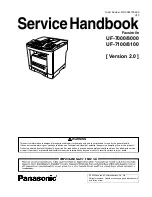
90
9-1-2022
APQS.com
Quilting Basics
Attaching Fabric to the Frame
No matter which loading method you choose
–
“full float,” “partial float” or “full attachment”
–
you’ll even
discover several different methods for holding the fabric to your frame. These include pins of all types, zippers,
VELCRO®, staples, even magnets.
Gadgets that work similar to the closure on a Ziploc® bag are also popular (Leader Grips and Red Snappers are
two brands.) With those products, a plastic rod slips into a hem or pocket you create on each canvas. Your fabric
lies across this rod. You then press another piece of curved plastic down over the fabric and the rod (like closing
the Ziploc bag), securing it in place. Each attachment method also includes advantages and disadvantages.
Step-by-Step Quilt Loading Guide
Over time, you will try several different products and methods before you settle on one method that’s right for
you. However, since it would be a rare quilter who didn’t have ANY pins in her studio, we show you how to get
started with straight pins. Visit our YouTube quilting channel for videos showing how to partially float your quilt
top (the most common method for loading a quilt).
Step 1: Prepare Your Quilt Layers
•
Press the top and backing fabric.
•
Trim stray threads.
•
Check for loose or open seams.
•
Make sure the batting is 4 inches larger than your quilt on all sides.
•
Make sure the backing is at least 4 inches larger than your quilt on all sides (you’ll need 4
–
6 inches more
than that if you use Red Snappers or Leader Grips).
•
Mark the top of the quilt with a safety pin.
•
Mark the top of the backing with a safety pin.
Step 2: Choose Your Loading Method
While all three methods are options with advantages and disadvantages as earlier described, we’ll concentrate
on the most popular method to get you started
–
which is partially floating your quilt top.
Step 3: Choose Your Loading Device
Every loading device can present its own unique challenges as well as advantages. We encourage you to start
out with pins since they’re often already in your sewing room, but also so that you can get the process down
and understand what you like and don’t like about the loading process before investing in other loading
gadgets.
The pin type you choose is often dictated by what is readily available to you, as well as by whatever type or
brand your longarm instructor personally favors. Experiment, and don’t feel that you have to use a specific
brand or type of pin. The Clover Flower Head Pins are handy because you may find yourself turning a lot of
your quilts and re-mounting them to your frame. These pins help make that process easy and quick since you
can leave them in the quilt as you go and not worry about them bending or snagging your quilt.












































